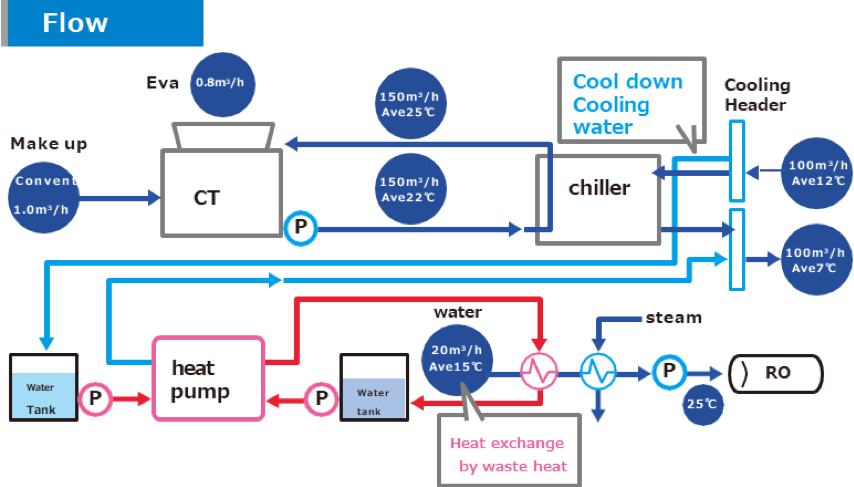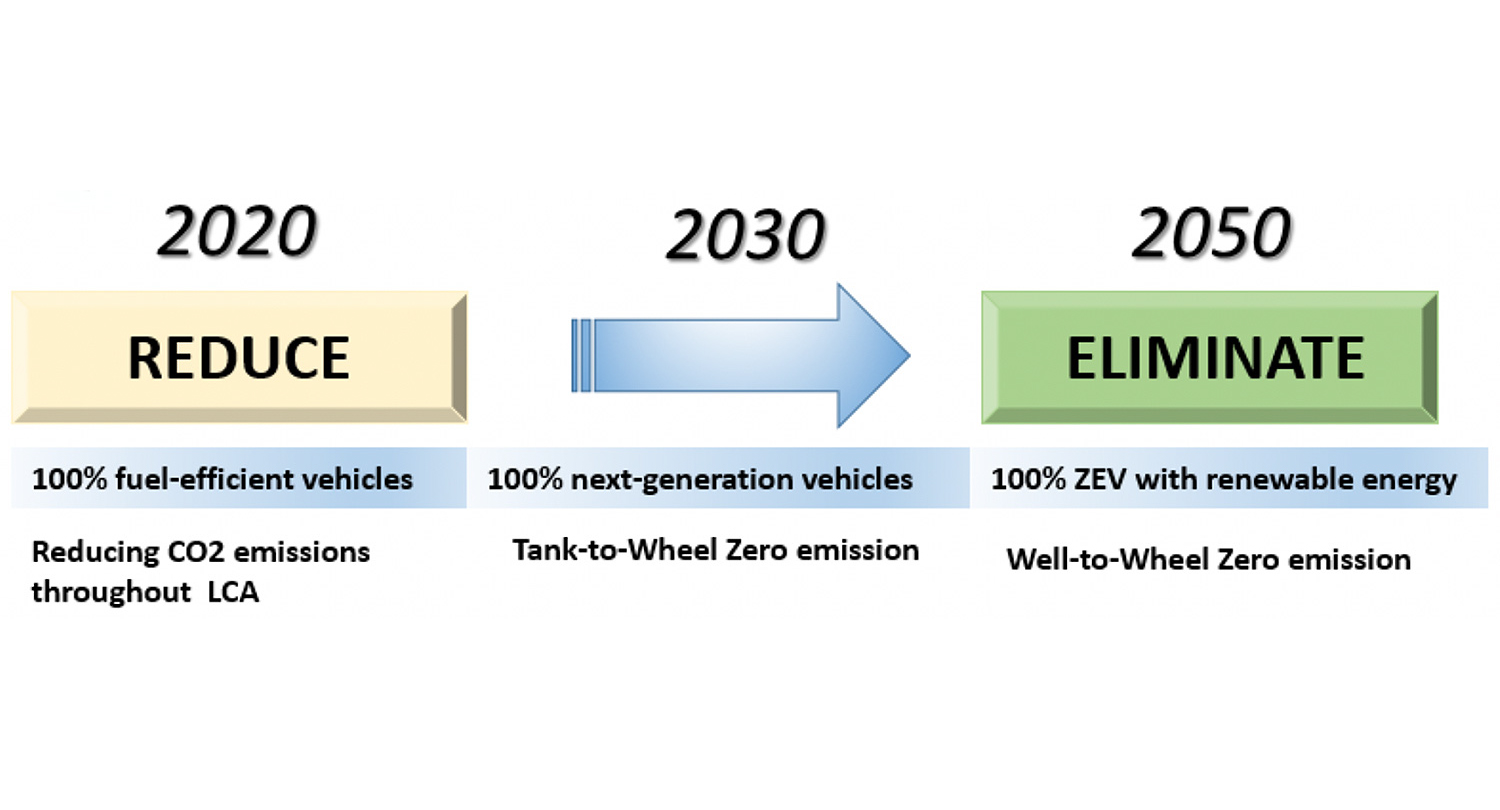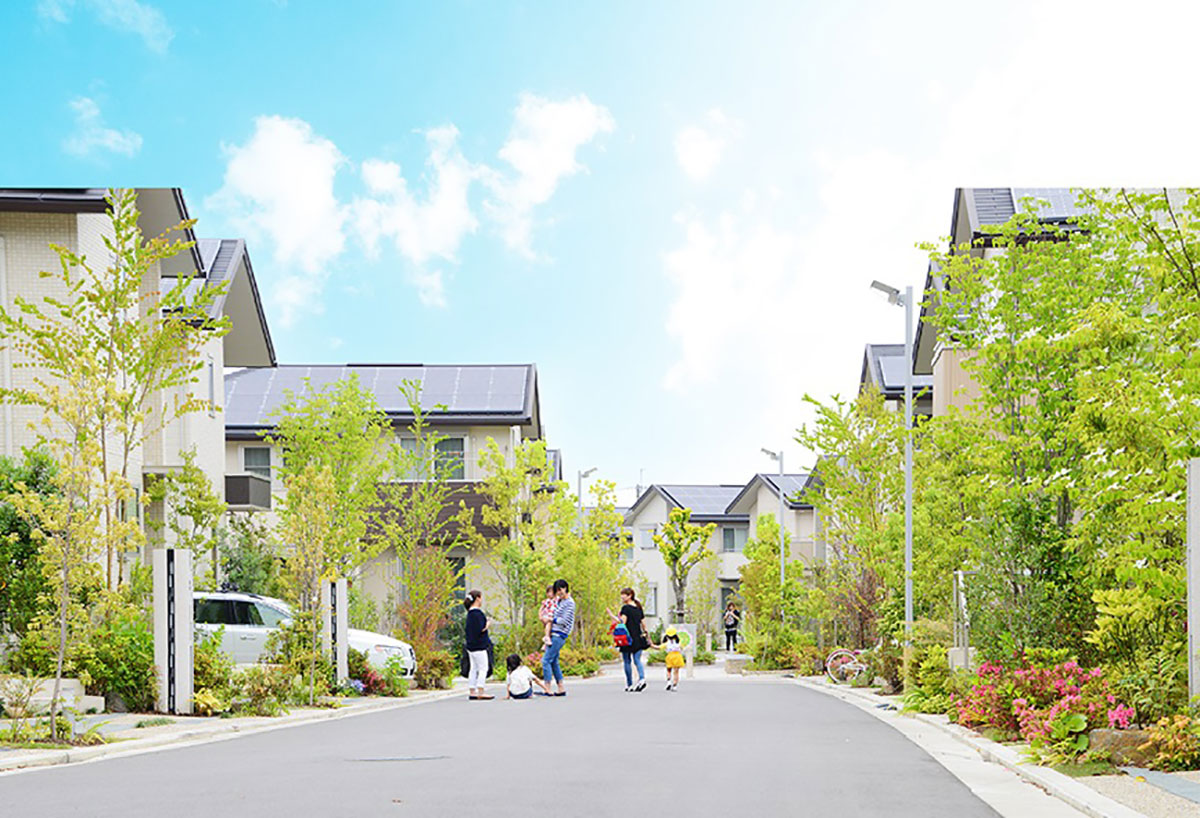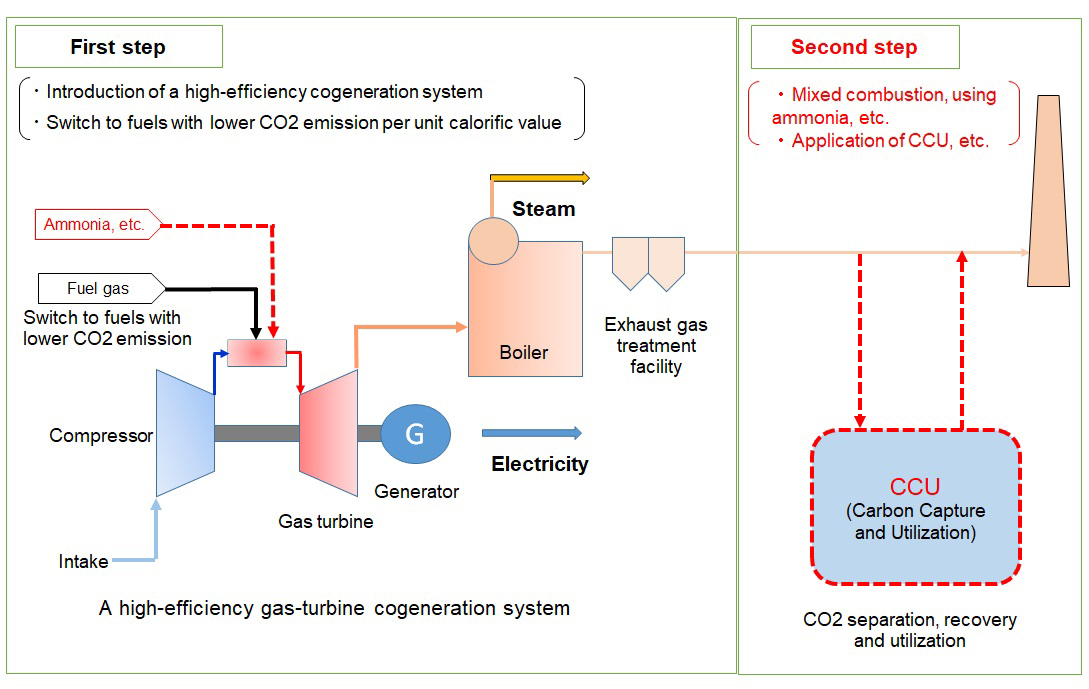Challenge for Zero-energy desalination plant
KURITA WATER INDUSTRIES LTD
Outline
1. Goal
Achieving zero fossil fuel-derived energy for industrial demineralizers with RO devices to reduce CO2 emissions significantly and achieve RE100 as soon as possible
2. Methods
(1) Installing a heat-recovery heat pump for heating feed-water, which is the major source of CO2 emissions from RO devices, to not use any steam or electricity that would be necessary to heat the feed-water
(2) The heat source of the newly installed heat pump is water which would otherwise be chilled in the chiller. This enables the offset of the electric power consumed by the heat pump with the reduction of the load on the chiller (energy conservation).
(3) The pressure pump is another major source of CO2 emissions, and we will try to achieve RE100 by using green energy (including on-site photovoltaic and micro hydroelectric power generation and the purchase of RE100 electricity).
(4) Eventually, we will use green energy to power the heat pump as well, to realize an industrial demineralizer which is not dependent on fossil fuels.
Description
1. Background
In the industrial world, pure water has been used in diverse forms. Demineralizers using RO devices are widely used in processes before the use of pure water.
In the demineralization process, energy is consumed mostly for two purposes, powering the pressure pump and heating the feed-water. The heating of feed-water accounts for 80% of CO2 emissions in the case of demineralizers for semiconductors.
Feed-water is heated for three purposes: (1) improving the demineralization performance (the higher the water temperature, the lower the water viscosity); (2) preventing the adhesion of silica (the higher the water temperature, the higher the silica solubility); (3) prewarming the manufacturing equipment in the subsequent process. Japan has many geographical areas where the water temperature in winter is low and the silica content of water is high, and therefore, if it is decided not to heat water simply to save energy, the water recovery rate must be lowered. This makes it difficult to obtain the specified amount of demineralized water.
2. Estimation of the amount of heat applied to feed-water and the amount of CO2 emitted.
If the statistical value for the amount of primary pure water for industrial use (industrial water) in Japan is
10,000 m3/h, heating time is 4,000 hours/year, and the water temperature is 15 to 25°C, the amount of applied heat is:
10,000 m3/h × (25-15)°C × 4.19 MJ/m3・°C × 4,000 hours/year = 1,676,000 GJ/ year (1)
If the CO2 emission conversion factor is 0.060 t-CO2/GJ, the amount of CO2 emitted (the reduction potential) is:
1,676,000 GJ/ year × 0.060 t-CO2/ GJ = 100,560 t/ year (2)
3. Initiatives
1) Stage 1: Heating RO feed-water without using steam or electricity
All feed-water to the RO device will be heated using high-efficiency heat-recovery heat pump technologies, thereby using no steam (or electricity) to heat the water.
Heat for the heat pump is collected from the cold water to be chilled by the chiller (around 12°C). This enables the offset of the power consumption by the heat pump with the reduction of the energy consumed by the chiller, enabling a significant energy savings.
In addition, this method is also expected to save even more energy by prewarming a wider range of manufacturing equipment in subsequent processes.
2) Stage 2: Achieving RE100 for powering the RO pressure pump
We will install high-efficiency pressure pumps and use green energy (including on-site photovoltaic and micro hydroelectric power generation and the purchase of RE100 electricity) to replace the pumps whose energy consumption was not reduced in Stage 1 to achieve RE100 for demineralizers.
3) Stage 3: Achieving RE100 for powering the heat pump
We will also install a high-efficiency heat pump, while at the same time taking the measures described in the above section 2) to achieve RE100 for the overall demineralizer, including the heat pump.
Other Innovation Challenges
Challenge for deploying Methane Fermentation Biogas Business
KURITA WATER INDUSTRIES LTD
Challenge for Zero-makeup water for cooling water system
KURITA WATER INDUSTRIES LTD
Similar Innovation Challenges
Achieve 2050 decarbonization target with Net Zero Energy House!
Sekisui House, Ltd.
Achieving net-zero emissions by promoting renewable energy use through both our monozukuri and products.
DAIWA HOUSE INDUSTRY CO., LTD.








